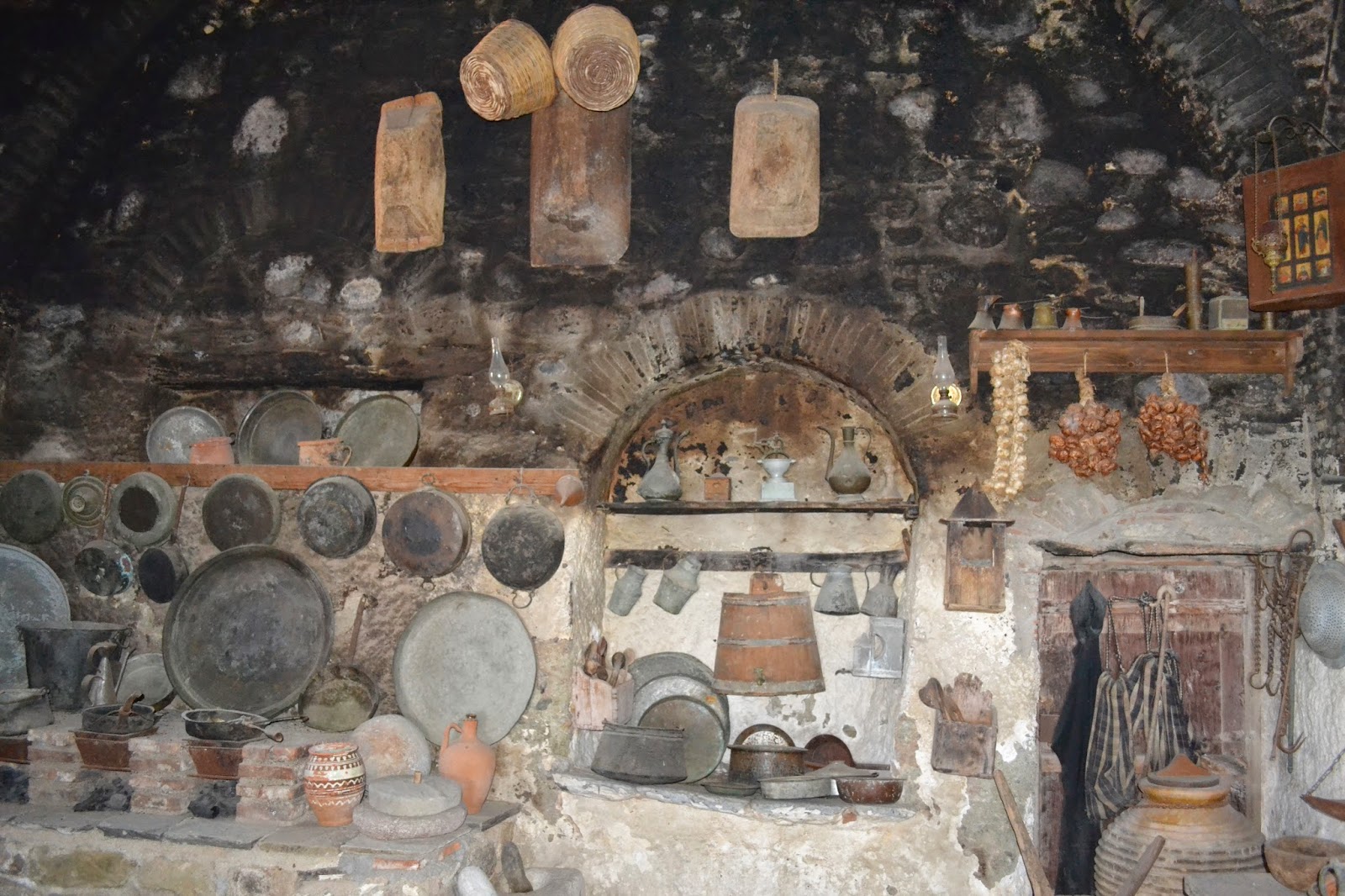 This morning we visited the Great
Monastery of Meteora (a.k.a. Transfiguration) and Varlaam (a.k.a All Saints).
One thing I cannot remember if I mentioned in the previous two posts about the
monasteries, is just how violent much of the iconography is that is written onto the
walls, ceilings, and arches of the Churches. I believe this reflects the high
value that the Orthodox Church places upon the martyrs (the Greek verb from
which we get the noun ‘martyr’ means witness, and—of course—the ultimate
witness is one which is expressed with one’s life).
This morning we visited the Great
Monastery of Meteora (a.k.a. Transfiguration) and Varlaam (a.k.a All Saints).
One thing I cannot remember if I mentioned in the previous two posts about the
monasteries, is just how violent much of the iconography is that is written onto the
walls, ceilings, and arches of the Churches. I believe this reflects the high
value that the Orthodox Church places upon the martyrs (the Greek verb from
which we get the noun ‘martyr’ means witness, and—of course—the ultimate
witness is one which is expressed with one’s life).  We can hear echoes of this
accentuation in our own Eucharistic Prayer D, which is particularly inspired by
the Orthodox liturgy (The American Colonial Church struck a compromise with the
Scottish Bishops in order to get Samuel Seabury ordained as our first bishop.
They agreed to include some of the Orthodox prayers in the first American
Prayer Book of 1789.) Some of you will recall the words from the climax of
Prayer D—which we use during the Easter Season at St. Peter’s—where we join our
voices with “…prophets, apostles, martyrs…”.
We can hear echoes of this
accentuation in our own Eucharistic Prayer D, which is particularly inspired by
the Orthodox liturgy (The American Colonial Church struck a compromise with the
Scottish Bishops in order to get Samuel Seabury ordained as our first bishop.
They agreed to include some of the Orthodox prayers in the first American
Prayer Book of 1789.) Some of you will recall the words from the climax of
Prayer D—which we use during the Easter Season at St. Peter’s—where we join our
voices with “…prophets, apostles, martyrs…”.
Indeed, one can see the robust
sense of communion that Orthodox Christians experience with all the saints.
They will typically kiss one of the icons as they enter a Church, not
reverencing the object itself, but the Christ and faithful forebears to which
these icons direct our attention.
The Great Monastery of Meteora has
an ossuary near the entrance. This room contains the skulls and bones of monks
who have died, along with candles, and an icon of the Resurrection. From the
earliest centuries of Christian faith, those who have died have been buried in
and around churches in anticipation of the resurrection of the body (not just
soul) as attested in the Nicene Creed. Setting aside a special place for the
bones of these saints within the community is somewhat like having a sacred
place for the interment of ashes in our Church.
 There was also a cellar with
relevant artifacts organized and displayed throughout the space. Notice the
substantial number of barrels. It is apparent that one can work up quite a
thirst laboring and praying atop the cliffs of Meteora.
There was also a cellar with
relevant artifacts organized and displayed throughout the space. Notice the
substantial number of barrels. It is apparent that one can work up quite a
thirst laboring and praying atop the cliffs of Meteora. Katherine paused at the door to the
original kitchen. It also included a display of original artifacts and several
hundred years of soot on the ceiling from the fires that cooked the community’s
meals each day.
Katherine paused at the door to the
original kitchen. It also included a display of original artifacts and several
hundred years of soot on the ceiling from the fires that cooked the community’s
meals each day.
The gardens were also beautiful at
the monasteries we visited today.







I am enjoying your blog and photographs. There is one thing missing, though: I wish you would indicate who is the author of each post. Sometimes it is obvious, others not. It is lovely that the voices of the entire family come together to share these experiences with us at St. Peter's.
ReplyDelete